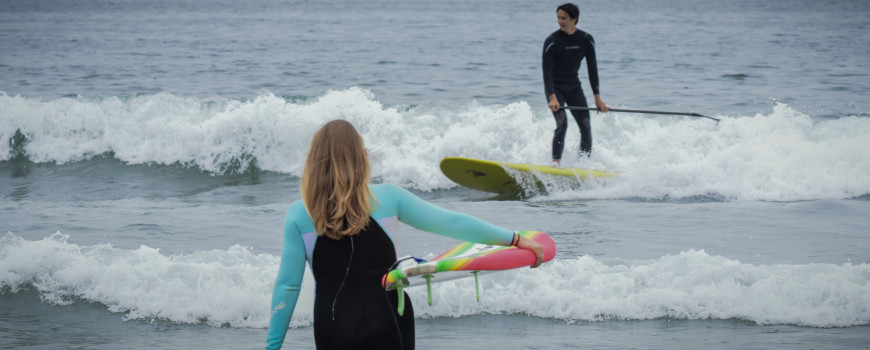Winter is upon us, and California is finally getting some much needed rain. But all that water that’s great for our drought can really put a damper on our beach time. Now that we’re in the thick of our California rainy season, here’s what you need to know about getting in the water following a rainstorm.
1) Why is it risky to go in the water after it rains?
Storm water runoff can pick up bacteria, fertilizers, oil, sewage, and other contaminants on its journey into our oceans and waterways. All that gunk hits the beach in a concentrated mass, before slowly dispersing out into the rest of the ocean. One study out of UC Irvine found that fecal indicator bacteria concentrations were 500% higher than bathing water quality standards following rain events in Southern California.
For people who frequent the water, this means a higher risk of gastrointestinal illness, ear and respiratory infections, skin rashes, and other ailments. Though rare, there have been cases of people contracting serious infections which resulted in hospitalization and even death.
2) How long should I wait before it’s safe to go back in?
The Department of Environmental Health recommends avoiding activities such as swimming, surfing, and diving for 72 hours after it rains. Research has shown that the risk of infection is the highest during and the day after rain, and declines to around normal levels after three days.
3) It barely even sprinkled, should I be worried?
It’s important to remember, while it may not have rained much in your location, it’s possible that there was more rain in surrounding areas which resulted in stormwater runoff. When in doubt, check local water quality reports to see if advisories were issued.
Below are websites containing water quality and advisory information for San Diego, Orange, Los Angeles, Santa Barbara, Santa Cruz, and San Francisco counties.
4) There are no signs posted, does that mean this beach is ok?
Often, signs aren’t posted for general rain advisories, but this doesn’t mean that there are no advisories in effect. Check online for local advisories to be sure.
5) I see other people out there, does that mean it’s safe?
Many people remain unaware of the risks associated with using the beach following rainstorms. And many dedicated water folk often consider the reward greater than the risk when it comes to surfing those storm swells. Always make your own educated choices rather than relying on the behavior of others.
6) Are certain locations riskier than others?
Absolutely! Storm drains and river mouths are where much of this runoff will be concentrated as it enters the ocean. And enclosed beaches and bays without much water flow reduce the ability for contaminants to disperse.
Open beaches with good water flow allow for bacteria to be dispersed more easily. Beaches in areas with less urban and agricultural development are also less likely to suffer from the most serious water quality issues.
For more information on water quality in your area, check your county’s webpage or resources like the Beach Report Card from Heal the Bay.

